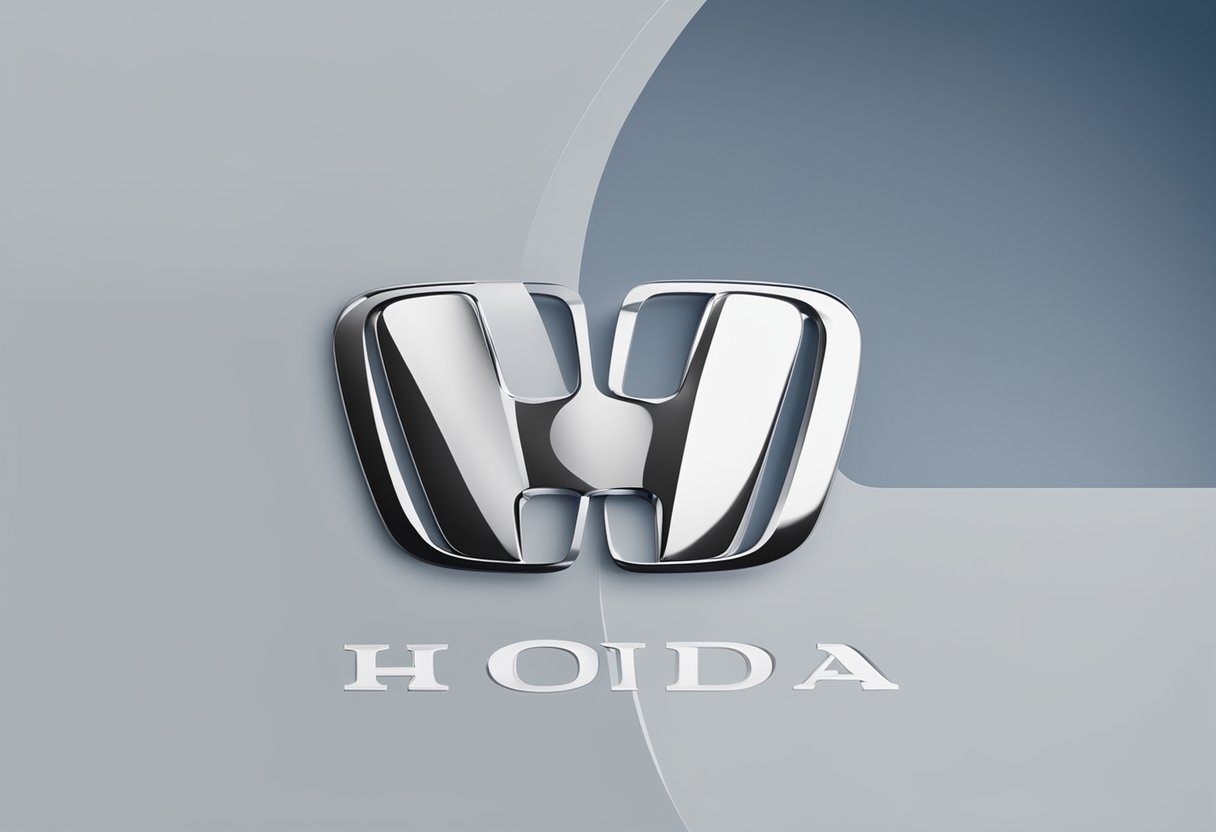Are you a fan of Honda cars? If so, you are probably familiar with the iconic Honda logo. The Honda logo is one of the most recognizable logos in the world and has undergone several changes throughout the years.
The current Honda logo features a bold, red letter “H” that appears as the brand’s badge. The “H” is the first letter in the surname of the Honda Motor Company founder, Soichiro Honda. The capital “H” is broader at the top and narrower at the bottom, giving the impression that its arms are raised towards the sky.
The Honda logo has a rich history and has evolved over time. From its early beginnings in the 1950s to the current logo, the Honda logo has become a symbol of quality and innovation. In this article, we will take a closer look at the history of the Honda logo and how it has changed over the years.
Origin of Honda Logo
https://www.youtube.com/watch?v=0n4BM4AhC8E&embed=true
Are you curious about the history behind the iconic Honda logo? Let’s take a closer look at the inspiration and design process that went into creating this memorable symbol.
Inspiration
The Honda logo was created in 1953 by the company’s founder, Soichiro Honda. Honda was inspired by the wings of an eagle, which he saw as a symbol of freedom and power. He believed that his company’s products, including motorcycles and automobiles, could help people experience the same sense of freedom and empowerment.
Design Process
The design process for the Honda logo was a collaborative effort between Soichiro Honda and his team of engineers and designers. They experimented with a variety of shapes and colors before settling on the final design.
The logo features a stylized “H” with two wings, which represent the company’s commitment to innovation and progress. The red color symbolizes passion and energy, while the silver color represents sophistication and high quality.
Over the years, the Honda logo has undergone several changes and updates, but the core design elements have remained the same. Today, the logo is recognized around the world as a symbol of quality, reliability, and innovation.
In conclusion, the Honda logo is an iconic symbol that represents the company’s commitment to innovation and progress. Whether you’re driving a Honda car or riding a Honda motorcycle, the logo serves as a reminder of the company’s dedication to excellence and customer satisfaction.
Evolution of Honda Logo
Honda’s logo has undergone several redesigns over the years, but the most iconic iteration of the logo was first introduced in 1969. The logo has a simple yet powerful design that has remained consistent over the years. Let’s take a closer look at the evolution of the Honda logo.
First Generation
The first Honda logo was introduced in 1948 when the company was founded. The logo featured the company name in Japanese characters. The logo was simple and straightforward, reflecting the company’s humble beginnings.
Current Generation
The current Honda logo was introduced in 1992 and has remained largely unchanged since then. The logo consists of an uppercase “H” enclosed in a round shape. The logo is designed to look stable and strong, reflecting the company’s commitment to producing quality vehicles and being a reliable brand.
Over the years, the Honda logo has become one of the most recognizable logos in the automotive industry. The logo has been used on everything from cars to motorcycles to lawnmowers, cementing Honda’s place as a leader in the industry.
In recent years, Honda has made some minor tweaks to the logo to keep it fresh and modern. For example, the company has experimented with different colors and textures to give the logo a more dynamic look.
Overall, the evolution of the Honda logo is a testament to the company’s commitment to innovation and excellence. The logo has evolved over the years, but its core values have remained the same. The Honda logo is a symbol of quality, reliability, and innovation, and it will continue to be an iconic symbol of the automotive industry for years to come.
Symbolism in Honda Logo

Honda is one of the most recognizable automotive brands in the world, and its logo is a significant part of its identity. The logo features an “H” inside a rectangular shape, which has evolved over the years to represent Honda’s values and aspirations. In this section, we will explore the symbolism behind the Honda logo.
Color Significance
The Honda logo is primarily silver and black, with a hint of red. The silver color represents sophistication, innovation, and modernity. It also reflects Honda’s commitment to precision engineering and quality. The black background symbolizes power, strength, and reliability, which are essential characteristics of Honda’s vehicles.
The red accent on the logo represents passion, energy, and speed. It’s a nod to Honda’s racing heritage and its commitment to creating vehicles that are both fast and efficient. The red color also adds a touch of excitement and excitement to the logo, making it stand out from other automotive logos.
Shape and Design
The rectangular shape that encloses the “H” in the Honda logo represents a wing, symbolizing freedom, speed, and progress. It is inspired by Honda’s early history in aviation and its aspiration to create products that provide a sense of liberation and excitement. The wing also represents Honda’s commitment to innovation and pushing the boundaries of what is possible.
The “H” in the logo represents the company’s founder, Soichiro Honda, and his commitment to precision engineering. The letter is designed to look stable and strong, reflecting the company’s dedication to producing quality vehicles and being a reliable brand. The horizontal bar of the “H” is extended on the right side, forming an arrowhead shape that points forward, symbolizing progress and direction.
In summary, the Honda logo is a perfect representation of the company’s values and aspirations. The silver, black, and red colors represent sophistication, power, and passion, respectively. The rectangular shape symbolizes freedom and progress, while the “H” represents precision engineering and stability. Together, these elements create a logo that is instantly recognizable and memorable.
Impact of Honda Logo
The Honda logo has had a significant impact on the brand’s recognition and global perception. Below are two sub-sections that highlight the importance of the logo.
Brand Recognition
The Honda logo has become synonymous with reliability, performance, and cutting-edge design. The logo’s simple yet powerful design captures the essence of the brand and resonates with people worldwide. The logo symbolizes Honda’s commitment to quality and innovation, which has helped establish the brand as a leader in the automotive industry.
The logo’s recognition is not limited to the automotive industry. Honda’s comprehensive catalog, which includes power generators, cars, and motorbikes, makes it necessary for the logo to be understood and recognized by customers from all walks of life. The logo’s recognition is a testament to the brand’s commitment to excellence and innovation.
Global Perception
The Honda logo’s recognition is not limited to Japan, where the brand was founded. The logo’s design and the brand’s commitment to quality and innovation have helped establish Honda as a global brand. The logo’s recognition is a testament to the brand’s ability to adapt to different markets and cultures.
The logo’s recognition has helped establish Honda as a brand that is synonymous with performance and reliability. The logo’s recognition has also helped establish Honda as a brand that is committed to innovation and excellence. The logo’s recognition is a testament to the brand’s ability to connect with customers worldwide.
In conclusion, the Honda logo has had a significant impact on the brand’s recognition and global perception. The logo’s recognition is a testament to the brand’s commitment to quality, innovation, and excellence. The logo’s recognition has helped establish Honda as a global brand that is synonymous with performance and reliability.
Comparative Analysis
Honda vs Other Car Logos
When it comes to car logos, Honda’s logo stands out for its simplicity and elegance. The Honda logo features an uppercase “H” enclosed in a round shape, which represents the company’s founder, Soichiro Honda, and his commitment to precision engineering. Compared to other car logos, such as the Toyota logo or the Ford logo, the Honda logo is much more minimalist and straightforward.
The Toyota logo, for example, features three overlapping ovals, which represent the unification of the hearts of the customer and the manufacturer, as well as the mutual trust between them. The Ford logo, on the other hand, features a blue oval with the word “Ford” written in white letters. While both logos are recognizable and iconic, they are more complex than the Honda logo.
Influence on Car Industry
The Honda logo has had a significant impact on the car industry. The company’s commitment to precision engineering and quality has made it a reliable and trustworthy brand. Honda has also been at the forefront of innovation, introducing new technologies and features in its vehicles.
Honda’s logo has also influenced the design of other car logos. For example, the Acura logo, which is Honda’s luxury vehicle division, features a similar design to the Honda logo, with an “A” enclosed in a round shape. The Acura logo represents the company’s commitment to precision and quality, just like the Honda logo.
In conclusion, the Honda logo’s simplicity and elegance have made it a recognizable and iconic symbol of the company’s commitment to precision engineering and quality. The logo has also influenced the design of other car logos and has had a significant impact on the car industry as a whole.
Marietta Arnold is a branding and design enthusiast who draws inspiration from hobbies like hiking, photography, and art exploration. With a background in graphic design, she shares insights on branding strategies and logo design trends. Stay updated with Marietta’s work for the latest in branding and design.



